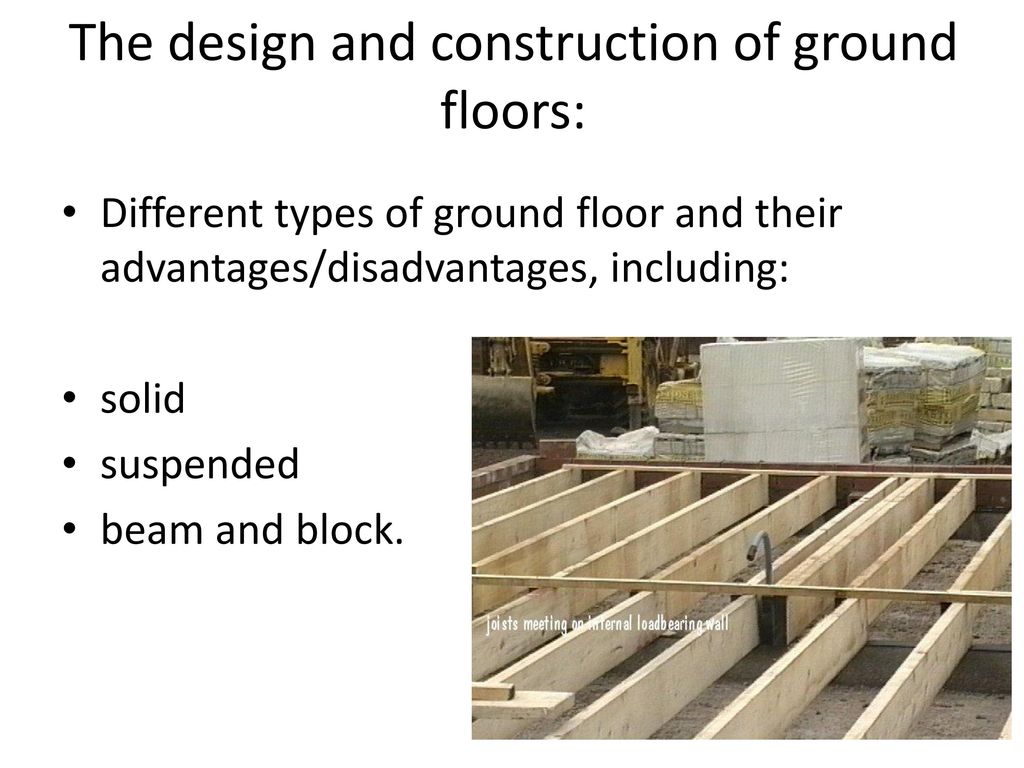There are broadly two common types of flooring.
Advantages of solid ground floor construction.
A solid ground floor consists of a layer of concrete which in the case of a domestic building will be the surface layer brought up to ground floor level with hardcore filling under it.
The disadvantage is that the floor is less resilient to walk upon and may.
These can be classed as either suspended or solid.
How to insulate solid floors.
Suspended floors and.
English heritage in its guidance note energy efficiency and historic buildings.
It is better to install the insulation during the building of the property because any retrofit is likely to cause issues with doorways and fixtures and fittings in the property.
Concrete floors can be constructed quickly.
Solid floors are a lot more substantial and require the ground to be made up in layers of ground sub base sand compacted hard core damp proof membrane insulation and concrete.
There are both advantages and disadvantages of using these slabs in your home though.
Precast flooring systems have the added advantage of reducing the amount of labour required on site.
The advantage of a solid ground floor is the elimination of dry rot and other problems normally associated with hollow joisted floors.
Concrete floor is nonabsorbent and hence offers sufficient resistance to dampness.
Concrete ground floors a good option for extensions.
There are 2 types of floor construction used in the building industry today.
The adoption of concrete floor speeds the completion of the ground floor.
Concrete ground floors consist of the following components in order.
However if you don t pour concrete then concrete slabs are another alternative for basement floors and walls.
Concrete is often used to fill the base of a house create the basement and to make a solid foundation.
Although this method is very labour intensive the cost of materials is relatively low hence the appeal for diyers with access to free labour.
Hardcore blinding dp membrane site concrete insulation a floor finish 3.
Building methods construction technology solid ground floors 2.
Ground floors there are two main types of ground floors.
Ground floors built of solid concrete remain popular with small builders and can often be an economic solution for home extensions.
Concrete vs timber floors.
Solid ground floors 1.
It is not possible to lay insulation underneath a solid floor so any insulation will need to go on top.
Plain concrete slabs have served as the flooring material for basements garages patios and utility areas for many years but concrete is now also a viable material in home interiors where it can be polished etched or stained to serve as the finished flooring surface if you are used to thinking of concrete as a utilitarian surface suitable only for utilitarian surfaces the many virtues.

